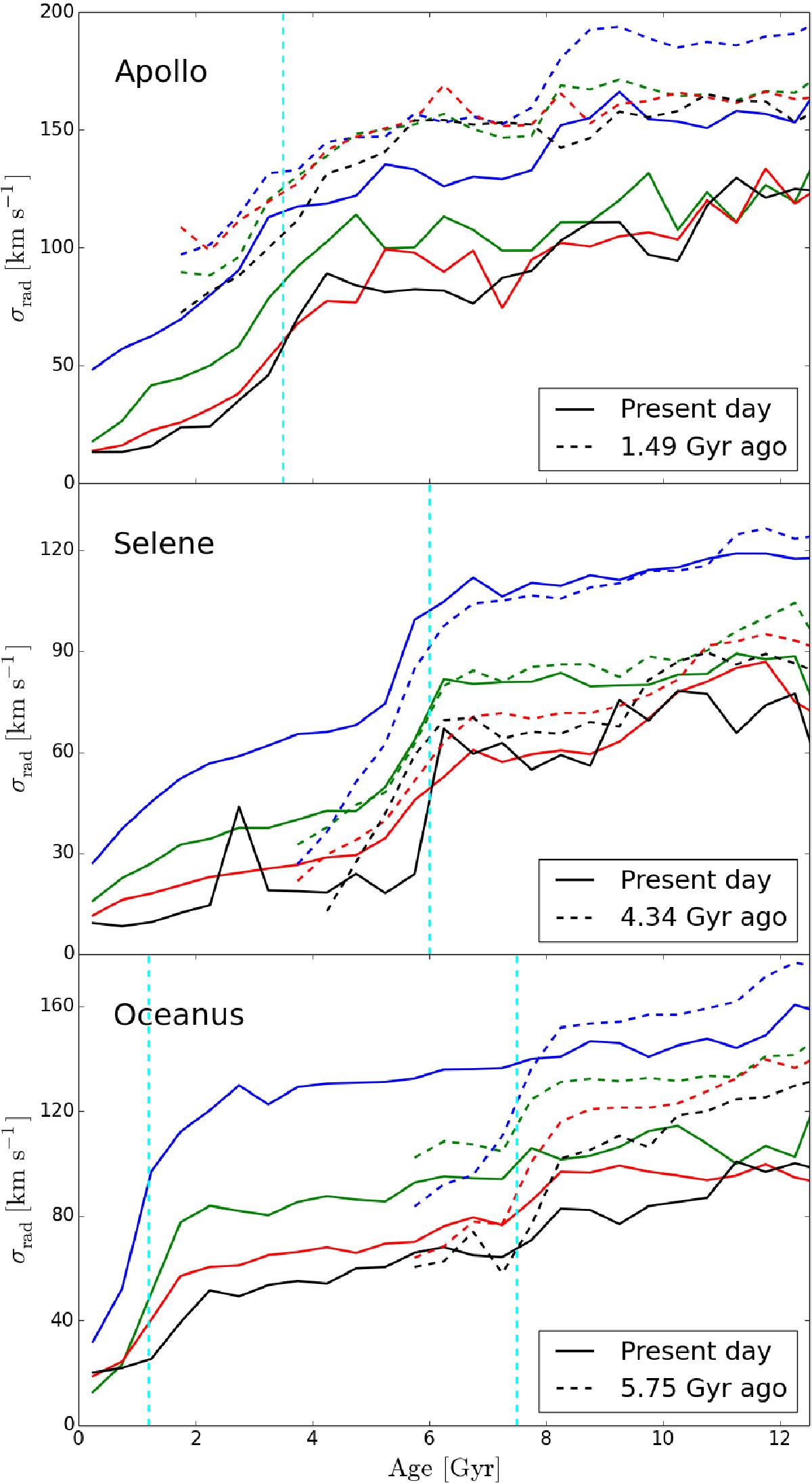Fig. 4

Radial velocity dispersion vs. age for Apollo (upper panel), Selene (middle panel), and Oceanus (bottom panel) disc stars, colour-coded according to their radial positions. Blue: region 1: inner region (one disc scale-length width, hin using the SDSS r-band mock images from SUNRISE Jonsson 2006; these mock images can be seen in Few et al. 2012). Red: region 2: a 1-hin width annulus between the centre and the 107 M⊙kpc-2 mass surface density. Green: region 3: a 1-hin width annulus centred at the 107 M⊙kpc-2 mass surface density. Black: A 3.5-hin width annulus further out (see text, Table 2, and Fig. 4 for further details). The parameter hin is 2.34, 5.67, and 8.07 kpc for Apollo, Selene, and Oceanus, respectively. The parameter tjump is denoted for each galaxy with dashed cyan vertical lines (the moment when the last main satellite is accreted). This plot is aimed at illustrating different epochs for different galaxies when the last major accretion event happened. Dashed lines show the AVR at intermediate simulation stages between the formation of the galaxy and the present day to address the effect of the last merger episode in the AVR (1.49 Gyr ago for Apollo, 4.34 for Selene, and 5.75 Gyr for Oceanus).
Current usage metrics show cumulative count of Article Views (full-text article views including HTML views, PDF and ePub downloads, according to the available data) and Abstracts Views on Vision4Press platform.
Data correspond to usage on the plateform after 2015. The current usage metrics is available 48-96 hours after online publication and is updated daily on week days.
Initial download of the metrics may take a while.


